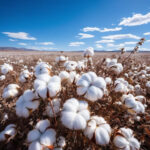Pampore, known as the saffron city of Kashmir, has been grappling with a troubling trend in saffron production over recent years. What was once a flourishing industry for over four decades is now facing uncertainty, leaving local farmers in a state of concern.
Factors Contributing to the Decline
Abas Ali, a seasoned saffron grower from the region, attributes the decline to a combination of factors, primarily climate change and inadequate irrigation facilities. “Due to severe climate change and lack of irrigation facilities, we are experiencing a decline in saffron production in the state,” he says. This sentiment is echoed by many others like him who have witnessed firsthand the adverse effects of these environmental shifts on their crops.
Imtiyaz, another saffron farmer, sheds light on the specificity of saffron cultivation, emphasizing that it cannot thrive everywhere. “There is a particular area to grow saffron. It cannot be sown everywhere, and if it is executed in this way, the saffron grown does not hold its aroma,” he explains. Imtiyaz also points out the threat of industrialization and construction, which are gradually diminishing the available land for saffron cultivation.
Growing Importance of Kashmir’s Saffron Market

Globally, saffron or Kesar is the most expensive spice, with 1 pound (450 grams) costing between 500 and 5,000 U.S. dollars. Kashmir’s saffron is renowned for its superior quality, making it a lucrative export product. However, the decline in production is threatening this market position.
The Threat of Corn Rot Disease
Adding to the challenges faced by saffron farmers is the possibility of disease plaguing the saffron fields. Farmers have noted signs of decreased productivity, hinting at potential disease affecting the precious spice. Insight from an expert at the Indian Council of Agricultural Research (ICAR) suggests a specific disease, known as ‘Corn Rot Disease’. This fungal infection is believed to be a significant factor contributing to the decline in saffron production.
Expert Advice from ICAR
The ICAR expert proposes practical solutions to combat Corn Rot Disease and improve saffron cultivation. He recommends the use of carbendazim, a fungicide effective against the disease. Moreover, adopting modern irrigation techniques such as sprinkler and drip irrigation during flowering, coupled with proper weeding practices, could strengthen saffron growth and yield.
Conclusion
In conclusion, the saffron farmers of Pampore face a daunting task as they strive to overcome the challenges threatening their livelihood. Factors such as climate change, inadequate irrigation facilities, and the spread of diseases like Corn Rot Disease have significantly impacted saffron production in the region.
Despite these challenges, there is a glimmer of hope as experts offer practical solutions to combat these issues. By implementing modern irrigation techniques and using effective fungicides, farmers can potentially revive the saffron industry in Pampore. With concerted efforts and scientific intervention, there is optimism that the saffron fields of Pampore will once again flourish, restoring the glory of Kashmir’s prized saffron industry.
Click Here For More Latest Information
FAQs
- What is causing the decline in saffron production in Pampore?
- The decline is primarily attributed to climate change, inadequate irrigation facilities, and the threat of industrialization and construction.
- Why is saffron cultivation specific to certain areas?
- Saffron cultivation requires specific conditions to thrive, including soil composition, altitude, and climate, which are found in limited regions.
- What is Corn Rot Disease, and how does it affect saffron production?
- Corn Rot Disease is a fungal infection that affects saffron plants, leading to decreased productivity and quality.
- What solutions are proposed to combat Corn Rot Disease?
- The use of carbendazim, a fungicide, and modern irrigation techniques such as sprinkler and drip irrigation are recommended.
- What is the outlook for the future of saffron production in Pampore?
- Despite the current challenges, farmers remain hopeful that a combination of efforts and scientific intervention will revive the saffron industry in Pampore.










